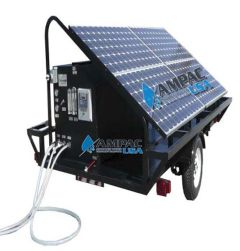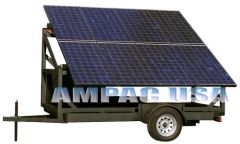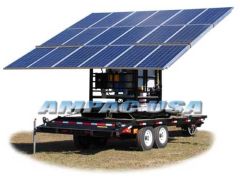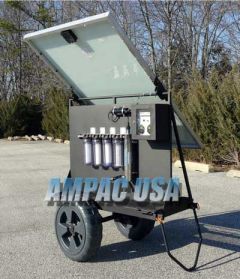The Global Need for Solar Seawater Desalination
Water scarcity affects over 2 billion people worldwide. Coastal and island regions, in particular, suffer from high salinity levels and limited access to clean freshwater. Traditional reverse osmosis (RO) systems rely heavily on electricity, making them unsuitable for remote or off-grid use.
Solar-powered desalination offers a sustainable alternative by using clean solar energy. It significantly lowers operational costs, with energy savings of up to 70–90% compared to grid-powered systems, making it the future of sustainable water access.
Compare AMPAC USA Solar Desalination Systems
Find the right solar seawater desalination machine that fits your needs. Below is a quick comparison of AMPAC USA's most popular models:
| Model | Capacity (GPD) | Best For | Solar Power Type | Product Link |
|---|---|---|---|---|
| SLR-1 | 2,500 | Remote cabins, camps, small families | Photovoltaic Panels | View Product |
| SLR-6 | 6,000 | Farms, clinics, small communities | Integrated Solar System | View Product |
| SLR-9 | 9,000 | Coastal villages, relief operations | Mobile Solar Array | View Product |
| SLR-18 | 15,000 | Military camps, large-scale desalination | High-Capacity Solar Grid | View Product |
Application Scenarios for Solar Seawater Desalination Systems
Explore how AMPAC USA's solar desalination solutions are helping solve real-world water challenges across industries and geographies.
| Use Case | Description | Key Benefits |
|---|---|---|
| Coastal Villages | Provides daily potable water where groundwater is saline or unavailable. | Grid-free operation, reliable freshwater, low maintenance |
| Island Resorts & Eco-Retreats | Environmentally friendly water solution for remote hospitality setups. | Eco-sustainable, low operational cost, silent operation |
| Disaster Relief Zones | Deployed during floods, hurricanes, or emergencies to ensure clean water supply. | Quick setup, no external power needed, rugged portability |
| Military & Defense Camps | Supports troops in remote or off-grid regions with consistent clean water. | Durable design, 24/7 operation, minimal oversight |
| Agricultural Irrigation | Converts saline or brackish water into usable irrigation water for crops. | Protects crops, improves yield, promotes water reuse |
| Offshore Platforms & Marine Vessels | Used on ships and rigs to desalinate seawater onboard. | Self-sustained, compact, corrosion-resistant components |
Frequently Asked Questions (FAQs)
1. How does the solar seawater desalination machine work?
Our system uses solar panels (PV) to power high-pressure pumps that force seawater through reverse osmosis (RO) membranes. Optional UV or ozone purification further ensures water safety—delivering fresh, potable water off-grid. This method consumes only ~3 kWh/m³, similar to large-scale RO operations.
2. Is the desalinated water safe for drinking?
Yes. The RO membranes remove up to 99.9% of salt, bacteria, viruses, heavy metals, and other contaminants. Output water typically meets WHO and EPA standards, with TDS levels between 100–300 ppm.
3. What is the energy cost compared to conventional RO systems?
Solar-powered RO eliminates recurring fuel or grid electricity costs. With solar PV now costing ~\$0.03/kWh, operating costs can be as low as \$0.50–0.70 per cubic meter—much lower than traditional plants.
4. Can it work in cloudy or low-sun environments?
Yes—with hybrid configurations including battery backups or auxiliary power. Although direct solar reduces output on cloudy days, our designs ensure consistent performance using smart controllers and optional storage.
5. How is brine (concentrate) managed?
We use environmentally conscious brine discharge systems, such as diffused ocean returns or evaporation basins. Advanced solutions include zero-liquid discharge (ZLD) for inland use.
6. What maintenance is required?
Key tasks include quarterly cleaning/pre-treatment checks, RO membrane replacement every 6–12 months, and regular solar panel inspection. Maintenance is minimal and scalable based on system size.
7. What’s the lifespan and warranty?
Major components such as PV panels and membranes are rated for 5–10 years. Each system comes with a manufacturer warranty and 24/7 global support, backed by 30 years of AMPAC expertise.
8. What capacities are available?
AMPAC offers capacities from 2,500 GPD (SLR-1), 6,000 GPD (SLR-6), 9,000 GPD (SLR-9) up to 15,000 GPD (SLR-18) — all fully scalable and customizable to meet site-specific needs.





